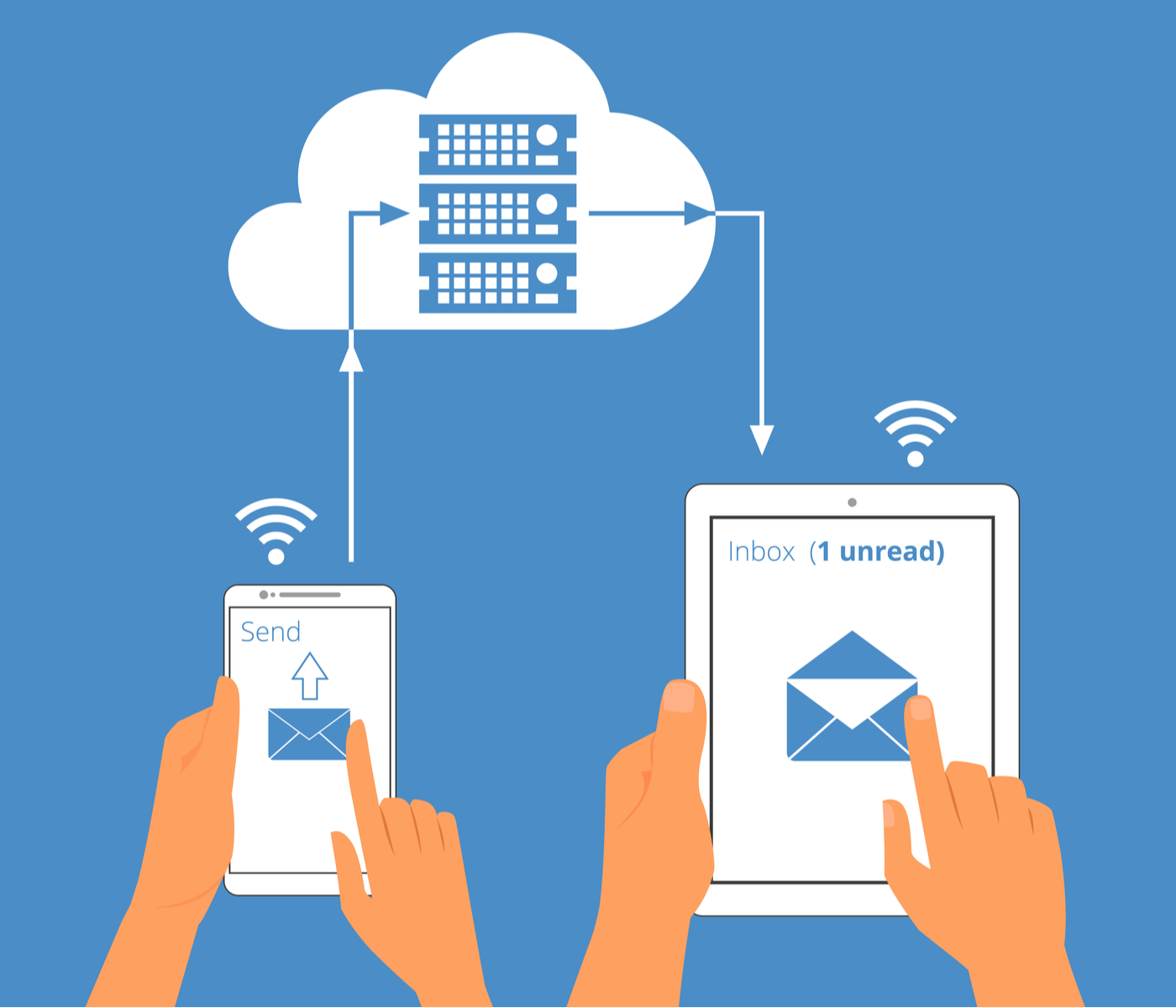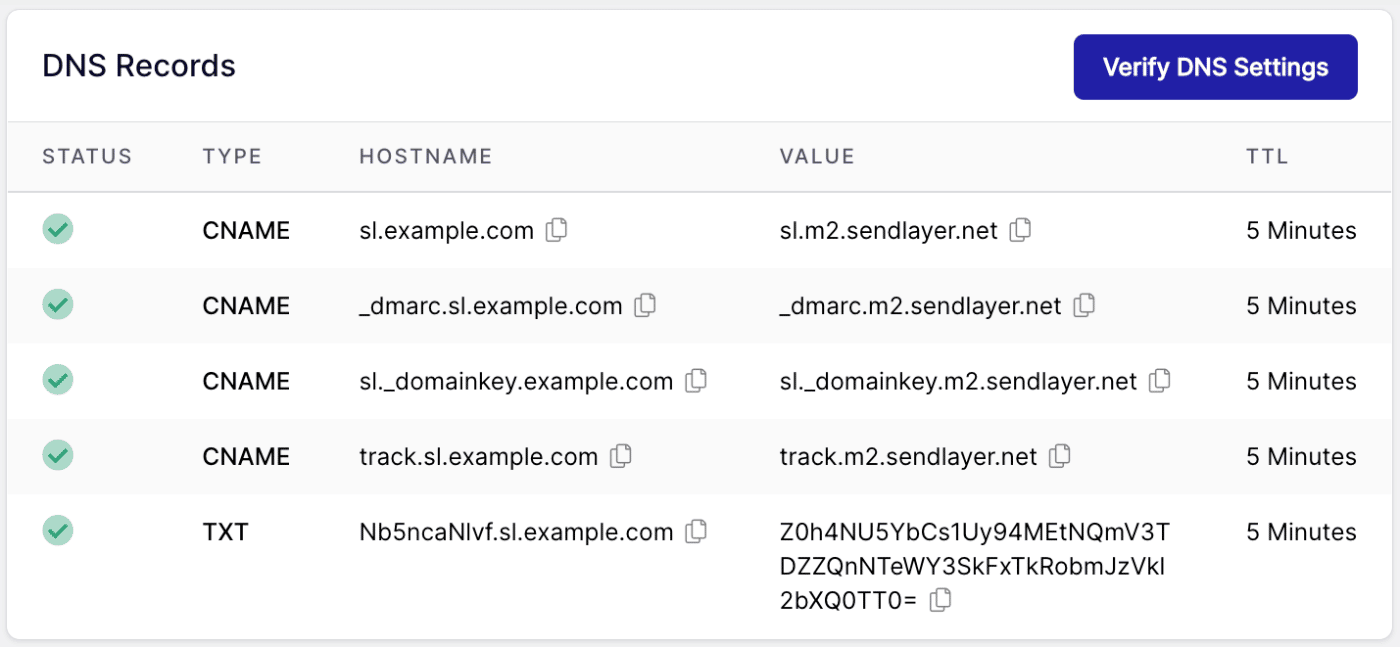What Is DNS?
DNS is like an address book for the internet. It converts domain names (like SendLayer.com) into IP addresses (like 1.2.3.4).
When you’re browsing the web, DNS allows your computer to locate a website without you having to remember the IP address yourself.
And when you’re sending email, DNS records play an important part in verifying the real sender to prevent spam and phishing emails.
How Do DNS Servers Work?
DNS servers have a few different functions. The most basic is quite easy to understand: the DNS server converts domain names into IP addresses.
We use domain names to identify the websites we want to visit because they’re easy for us to remember. But when you type in a web address such as sendlayer.com in your browser, your computer needs to look up the IP address for sendlayer.com in order to display it.
This is where DNS servers step in. Like a phonebook, DNS servers contain a database of domain names and their IP addresses. As soon as you type in a domain name, the DNS server searches its database to find the corresponding IP address.

Once your computer finds the domain’s IP address, it can then communicate with the server where the domain is located and load the content of the website in your browser.
DNS has many other functions, including verifying the real sender behind an email, or verifying that your domain name really belongs to you. Behind the scenes, DNS servers perform millions of checks and conversions like this every hour.
Why Is DNS Important for Email Delivery?
DNS is important for email delivery because:
- DNS makes sure that emails are delivered to the right place
- DNS also helps to authenticate emails, which means that servers can verify that the sender is not a spammer.
The second point is important when it comes to email deliverability. When you send an email using SMTP, it’s passed from one server to another on the way to the recipient’s mailbox. At various stages on this journey, the mailserver will run a series of tests to see if the email is likely to be a spam email or not.

For example, servers will compare that IP address to the domain name in the email headers. The server looks for a verified link between the two. If you don’t have the right DNS records, it won’t be able to find that link.
That’s why creating DNS records on your domain is so important. If you don’t have DNS records set up for sending email from SendLayer, the mailerserver may decide that the email isn’t trustworthy. It might look like someone else is using your domain to send spam.
If that happens, your emails may be filed in the Junk Mail folder or discarded on their way to the recipient’s inbox.
How Does DNS Resolution Work?
To explain how DNS resolution works, let’s take a look at what happens when you type SendLayer.com into your browser.
Local Cache
When you first type in sendlayer.com into your browser, your computer will first search its memory to find a matching IP address for this domain.
If it can’t find the IP address, your computer will then send the IP address request to the resolver DNS server.
DNS Resolver
The resolver server is the next step in the DNS hierarchy. It’s managed by your ISP .
When the resolver receives the request from your computer, it then searches its own memory to find an IP address record for sendlayer.com.
If the resolver server has no record of SendLayer’s IP address, it will then pass the request to a DNS server located on the next level, called the root nameserver.
Root Nameserver
The root nameserver is at the top layer of the DNS hierarchy. Although the root nameserver doesn’t itself have the IP address of any domain, it knows the location of the next DNS server that can help.
The root server guides the resolver to the TLD server.
Again, the TLD server won’t have the complete IP address information for sendlayer.com. However, it knows the address information for domain extensions (the part of the domain name that comes after the last dot in the URL such as .com, .net, .gov, and .org).
Authoritative Nameserver
Domain Resolved
What Are DNS Records?
DNS records contain technical information about a domain name. When you buy a domain, you’ll need to add DNS records so that people can visit your website and send emails to you.
DNS records can also be used to verify ownership of a domain. This means that you can prove the domain belongs to you by adding a unique code.
How Do DNS Records Work?
DNS records are part of the DNS system, which works in a similar way to a phone book for the internet.
These records contain all of the information that’s needed to show your website and deliver your emails successfully.

Each line in your DNS record has a specific purpose. For example, you’ll typically have an A record to point your domain name at your web hosting files.
You’ll likely have other records in your DNS zone, including TXT, CNAME, and MX . These records all do different things, like verifying ownership, defining subdomains, or making sure that emails are delivered to the correct mailbox.
Where Are My DNS Records Stored?
Your DNS records are likely located in one of the following places:
- Your domain registrar, if you purchased the domain name by itself
- Your web hosting control panel, if you purchased the domain with your hosting package, or you were given a free domain when you signed up
- A third-party company like Cloudflare, if you’ve chosen to use one.
Some providers call DNS records a ‘DNS Zone’ or a ‘zone file’.
That’s it! Now you know how DNS works.
Next, would you like to learn how to set up your DNS records for SendLayer? Check out the following resources: